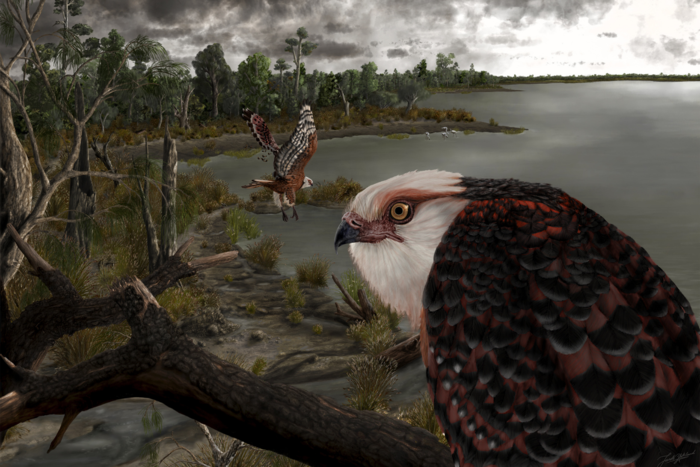Koala-hunting eagles soared skies of Australia 25 million years ago, study finds
Researchers say Archaehierax sylvestris is unlikely to be direct ancestor of any species alive today

Your support helps us to tell the story
From reproductive rights to climate change to Big Tech, The Independent is on the ground when the story is developing. Whether it's investigating the financials of Elon Musk's pro-Trump PAC or producing our latest documentary, 'The A Word', which shines a light on the American women fighting for reproductive rights, we know how important it is to parse out the facts from the messaging.
At such a critical moment in US history, we need reporters on the ground. Your donation allows us to keep sending journalists to speak to both sides of the story.
The Independent is trusted by Americans across the entire political spectrum. And unlike many other quality news outlets, we choose not to lock Americans out of our reporting and analysis with paywalls. We believe quality journalism should be available to everyone, paid for by those who can afford it.
Your support makes all the difference.A 25-million-year-old fossil recently unearthed in South Australia belongs to one of the largest eagles of the time, an apex predator that hunted koalas, possums, and other marsupials, a new study has found.
The research was published in the journal Historical Biology and sheds more light on the long evolutionary history of raptors in the continent.
The species, named Archaehierax sylvestris, is one of the oldest eagle-like raptors in the world, according to palaeontologists from Flinders University in Australia.
“This species was slightly smaller and leaner than the wedge-tailed eagle, but it’s the largest eagle known from this time period in Australia,” Ellen Mather, the study’s first author and Flinders University PhD candidate, said in a statement.
“The foot span was nearly 15 cm long, which would have allowed it to grasp large prey. The largest marsupial predators at the time were about the size of a small dog or large cat, so Archaehierax was certainly ruling the roost,” Ms Mather added.
With eagles being at the top of the food chain, scientists say they were always few in number and infrequently preserved as fossils.
“It’s rare to find even one bone from a fossil eagle. To have most of the skeleton is pretty exciting, especially considering how old it is,” Trevor Worthy, co-author and associate professor from Flinders University, said.
The findings suggest that the ancient raptors lived in a now-lost ecosystem when Australia’s interior was covered in trees and verdant forests that have turned into a desolate sandy desert habitat.
Though Archaehierax was living in a lush green forest habitat, the study suggested that it was adapted to avoid collisions with trees and branches while it flew and hunted.
“The fossil bones reveal that the wings of Archaehierax were short for its size, much like species of forest-dwelling eagles today. Its legs, in contrast, were relatively long and would have given it considerable reach,” said Ms Mather.
“The combination of these traits suggests Archaehierax was an agile but not particularly fast flier and was most likely an ambush hunter. It was one of the top terrestrial predators of the late Oligocene, swooping upon birds and mammals that lived at the time,” she added.
In this forest habitat, Archaehierax would have swooped in on koalas, possums and other animals in the trees and preyed on them, the study added.
The scientists said Archaehierax was one of the best-preserved of all the species found at the site on a remote outback cattle station. At this site, the team unearthed a partial fossil skeleton of the raptor comprising 63 bones.
When researchers tried to find where the new species fit on the eagle family tree, they found a range of features not seen among modern hawks and eagles.
“We found that Archaehierax didn’t belong to any of the living genera or families. It seems to have been its own unique branch of the eagle family,” Ms Mather said. “It’s unlikely to be a direct ancestor to any species alive today.”
Join our commenting forum
Join thought-provoking conversations, follow other Independent readers and see their replies
Comments